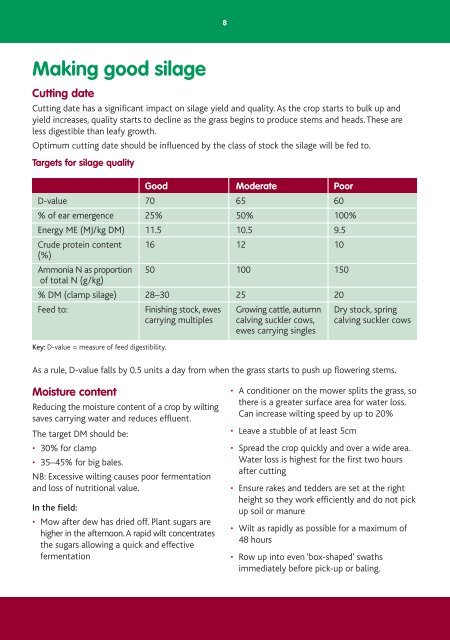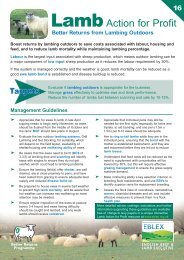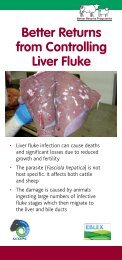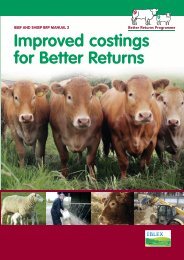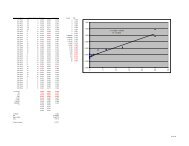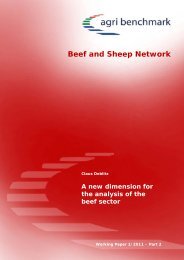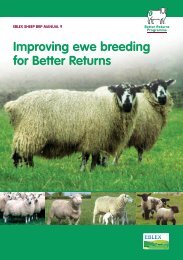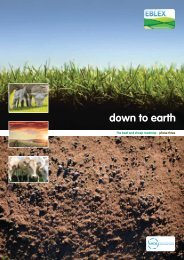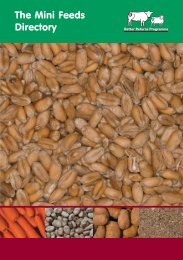Making Grass Silage for Better Returns - Eblex
Making Grass Silage for Better Returns - Eblex
Making Grass Silage for Better Returns - Eblex
Create successful ePaper yourself
Turn your PDF publications into a flip-book with our unique Google optimized e-Paper software.
<strong>Making</strong> good silage<br />
Cutting date<br />
Cutting date has a significant impact on silage yield and quality. As the crop starts to bulk up and<br />
yield increases, quality starts to decline as the grass begins to produce stems and heads. These are<br />
less digestible than leafy growth.<br />
Optimum cutting date should be influenced by the class of stock the silage will be fed to.<br />
Targets <strong>for</strong> silage quality<br />
As a rule, D-value falls by 0.5 units a day from when the grass starts to push up flowering stems.<br />
Moisture content<br />
Reducing the moisture content of a crop by wilting<br />
saves carrying water and reduces effluent.<br />
The target DM should be:<br />
• 30% <strong>for</strong> clamp<br />
• 35–45% <strong>for</strong> big bales.<br />
NB: Excessive wilting causes poor fermentation<br />
and loss of nutritional value.<br />
In the field:<br />
• Mow after dew has dried off. Plant sugars are<br />
higher in the afternoon.A rapid wilt concentrates<br />
the sugars allowing a quick and effective<br />
fermentation<br />
8<br />
Good Moderate Poor<br />
D-value 70 65 60<br />
% of ear emergence 25% 50% 100%<br />
Energy ME (MJ/kg DM) 11.5 10.5 9.5<br />
Crude protein content<br />
(%)<br />
16 12 10<br />
Ammonia N as proportion<br />
of total N (g/kg)<br />
50 100 150<br />
% DM (clamp silage) 28–30 25 20<br />
Feed to: Finishing stock, ewes Growing cattle, autumn Dry stock, spring<br />
carrying multiples calving suckler cows,<br />
ewes carrying singles<br />
calving suckler cows<br />
Key: D-value = measure of feed digestibility.<br />
• A conditioner on the mower splits the grass, so<br />
there is a greater surface area <strong>for</strong> water loss.<br />
Can increase wilting speed by up to 20%<br />
• Leave a stubble of at least 5cm<br />
• Spread the crop quickly and over a wide area.<br />
Water loss is highest <strong>for</strong> the first two hours<br />
after cutting<br />
• Ensure rakes and tedders are set at the right<br />
height so they work efficiently and do not pick<br />
up soil or manure<br />
• Wilt as rapidly as possible <strong>for</strong> a maximum of<br />
48 hours<br />
• Row up into even ‘box-shaped’ swaths<br />
immediately be<strong>for</strong>e pick-up or baling.


